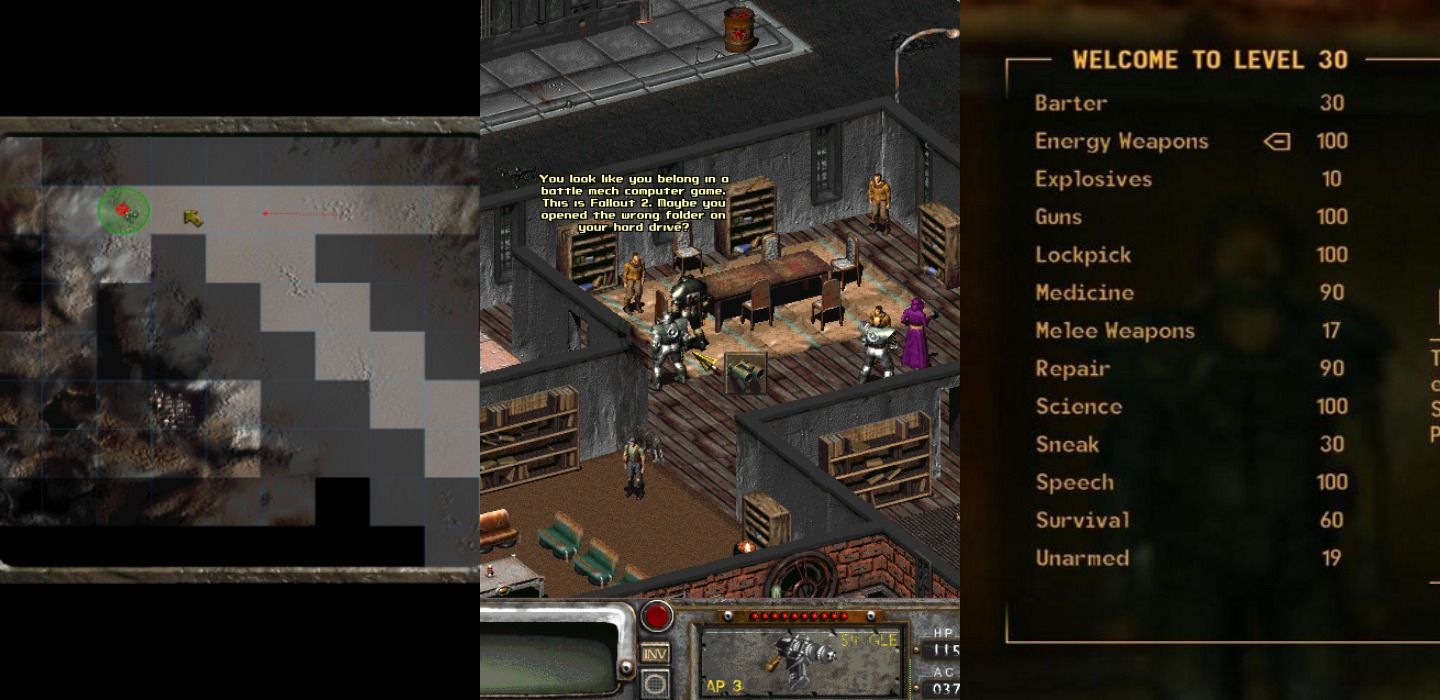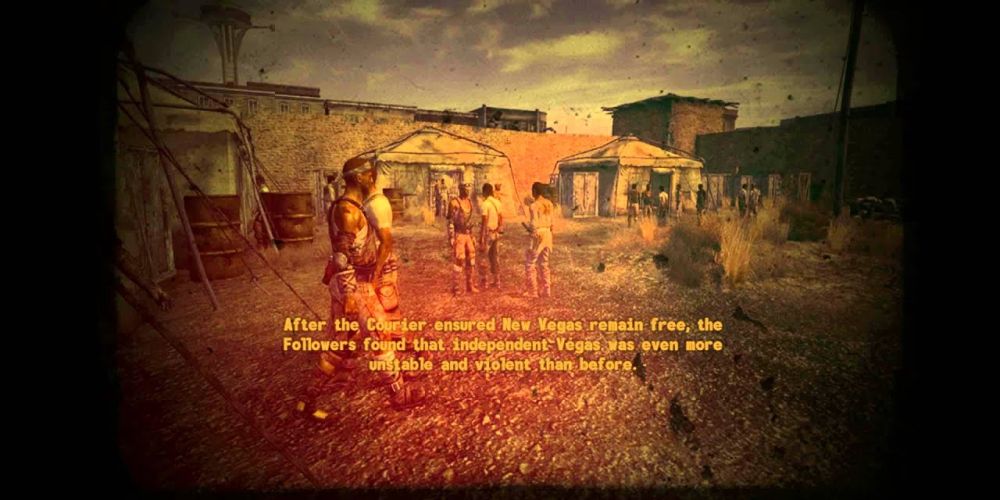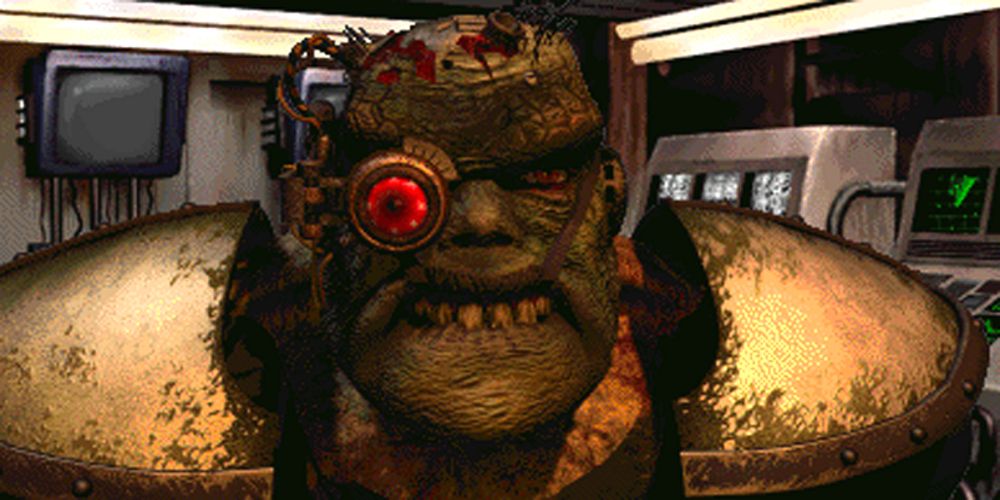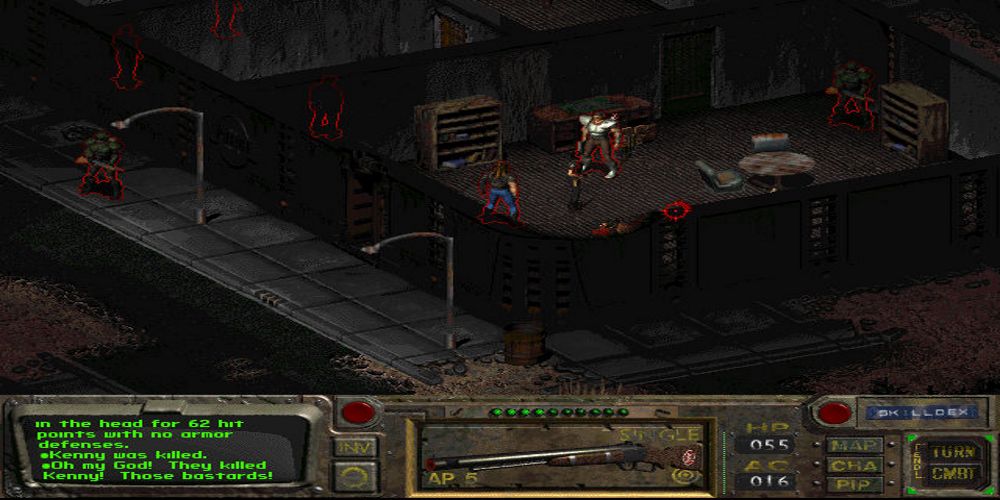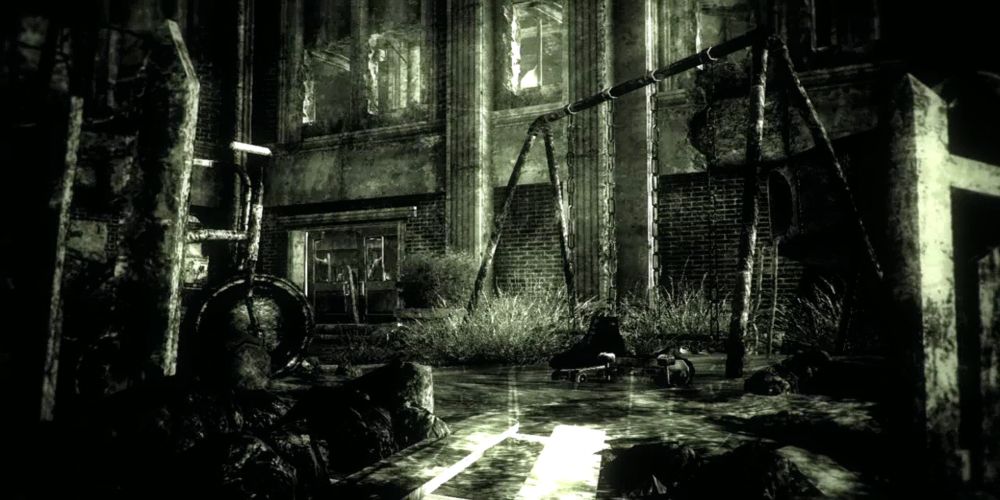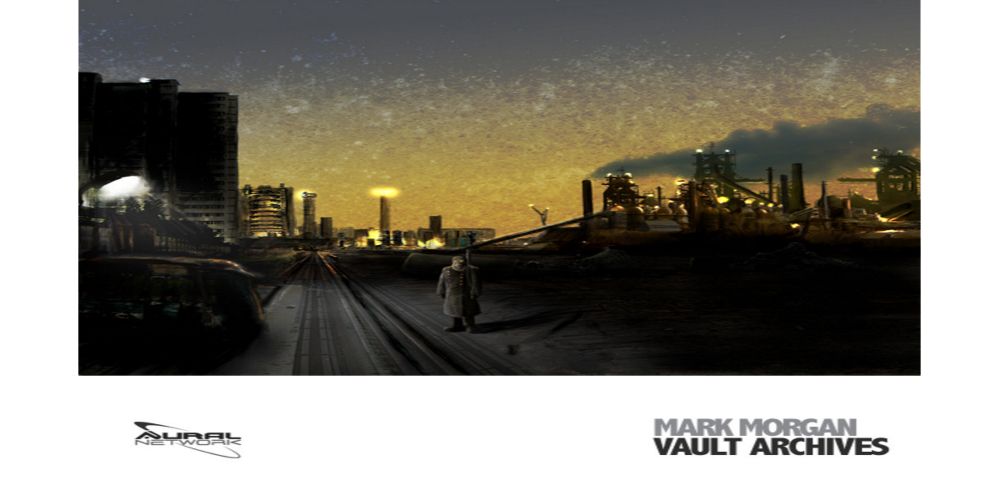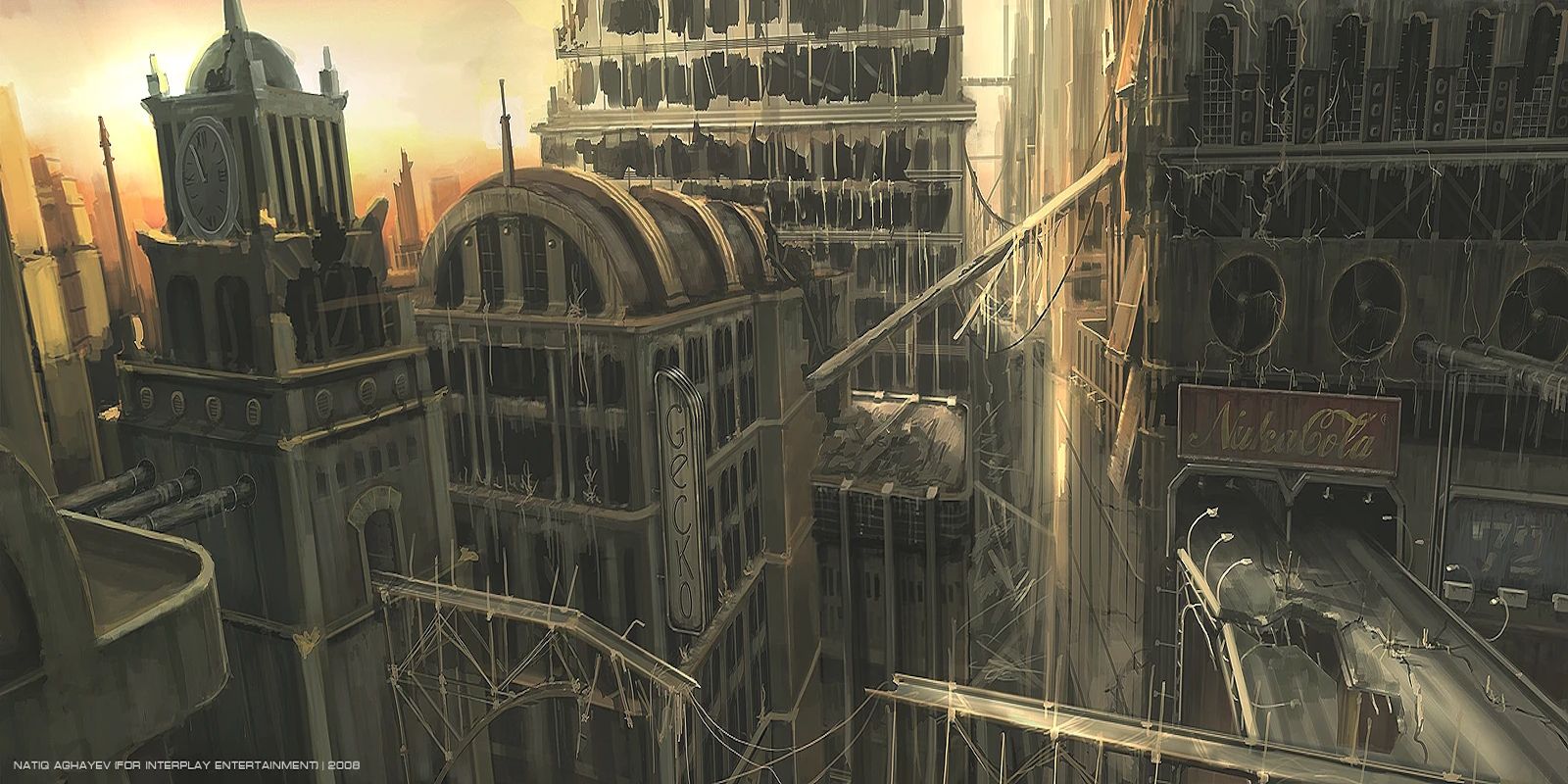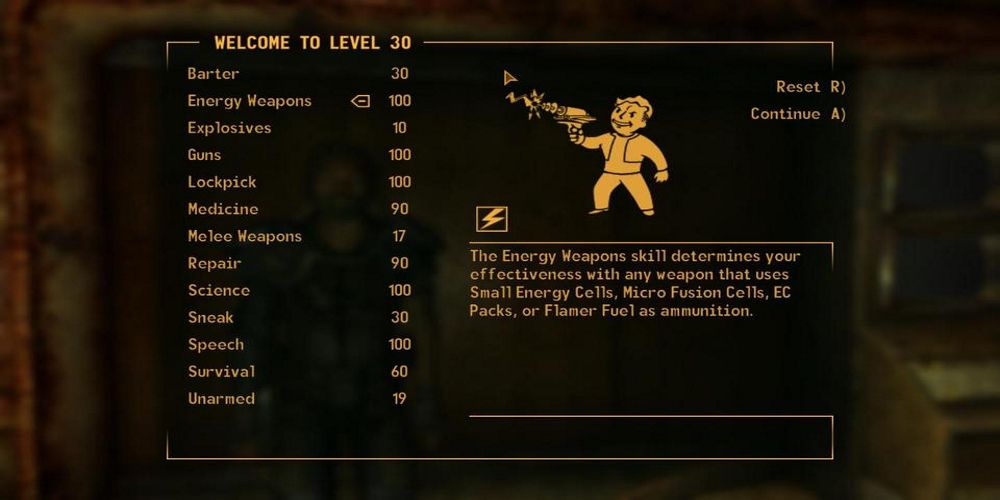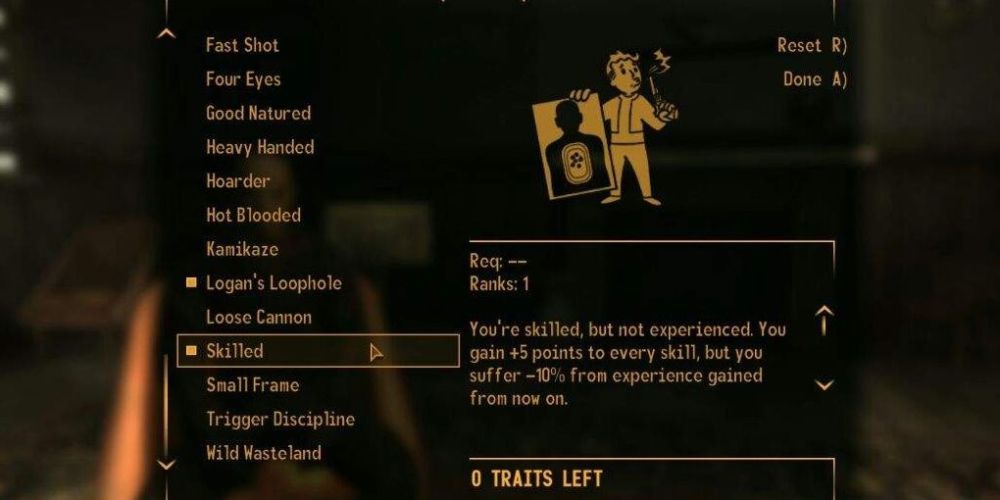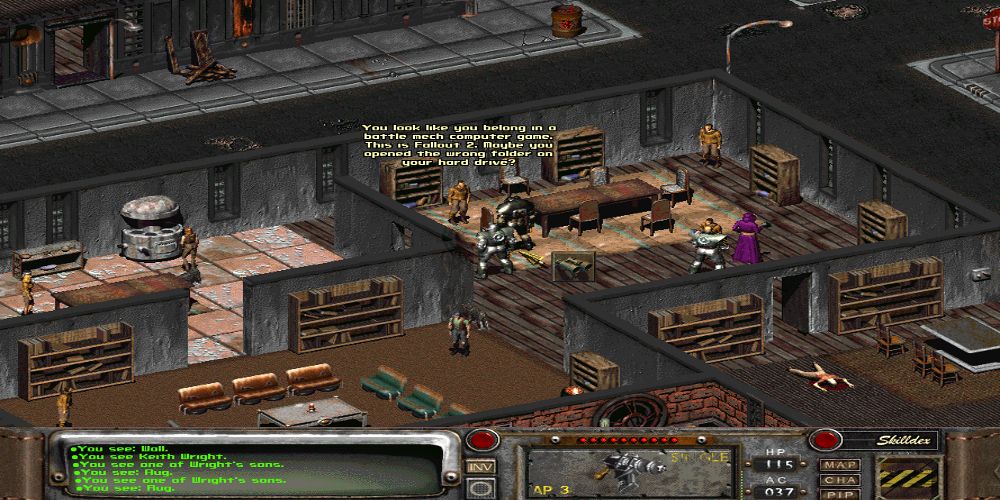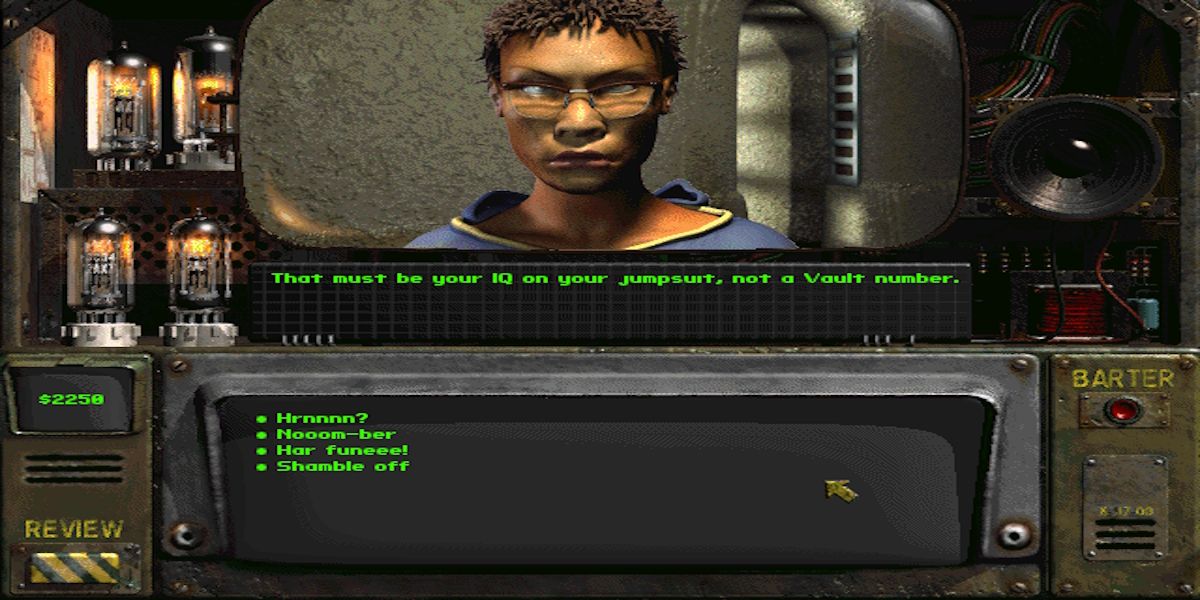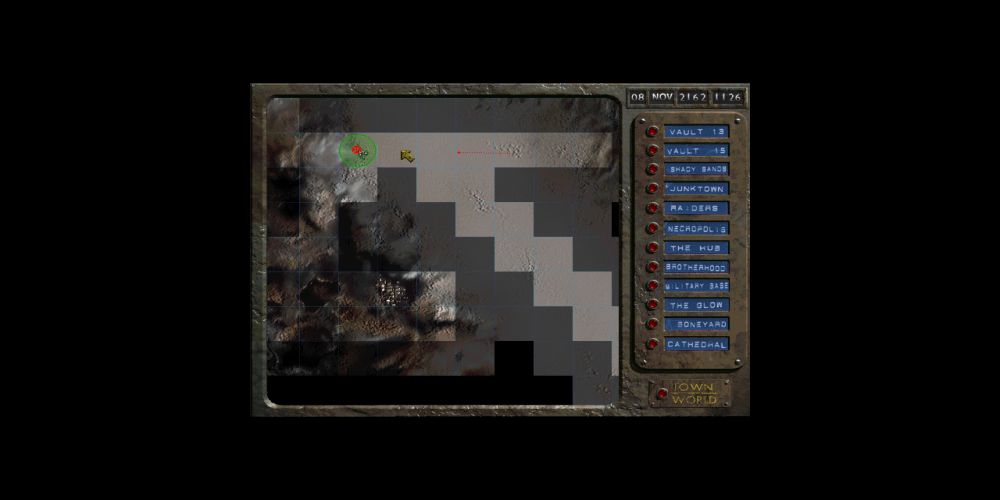Highlights
- Fallout franchise underwent drastic changes in gameplay and tone over its 25-year history, embracing new directions and abandoning some classic features.
- Bethesda's Fallout games changed turn-based combat to FPS-RPG style, introduced more vague endings, and lessened the intelligence of super mutants.
- The series has shifted from a dark, industrial art direction to a more lighthearted and theme park-like tone with conventional orchestral soundtracks.
The Fallout series has been a thing for quite a while now. Almost 25 years have passed since the release of the first game in 1997, and it has changed in numerous ways since then. The series, however, went on a long hiatus after a few games failed to generate enough sales to keep Interplay from selling the property.
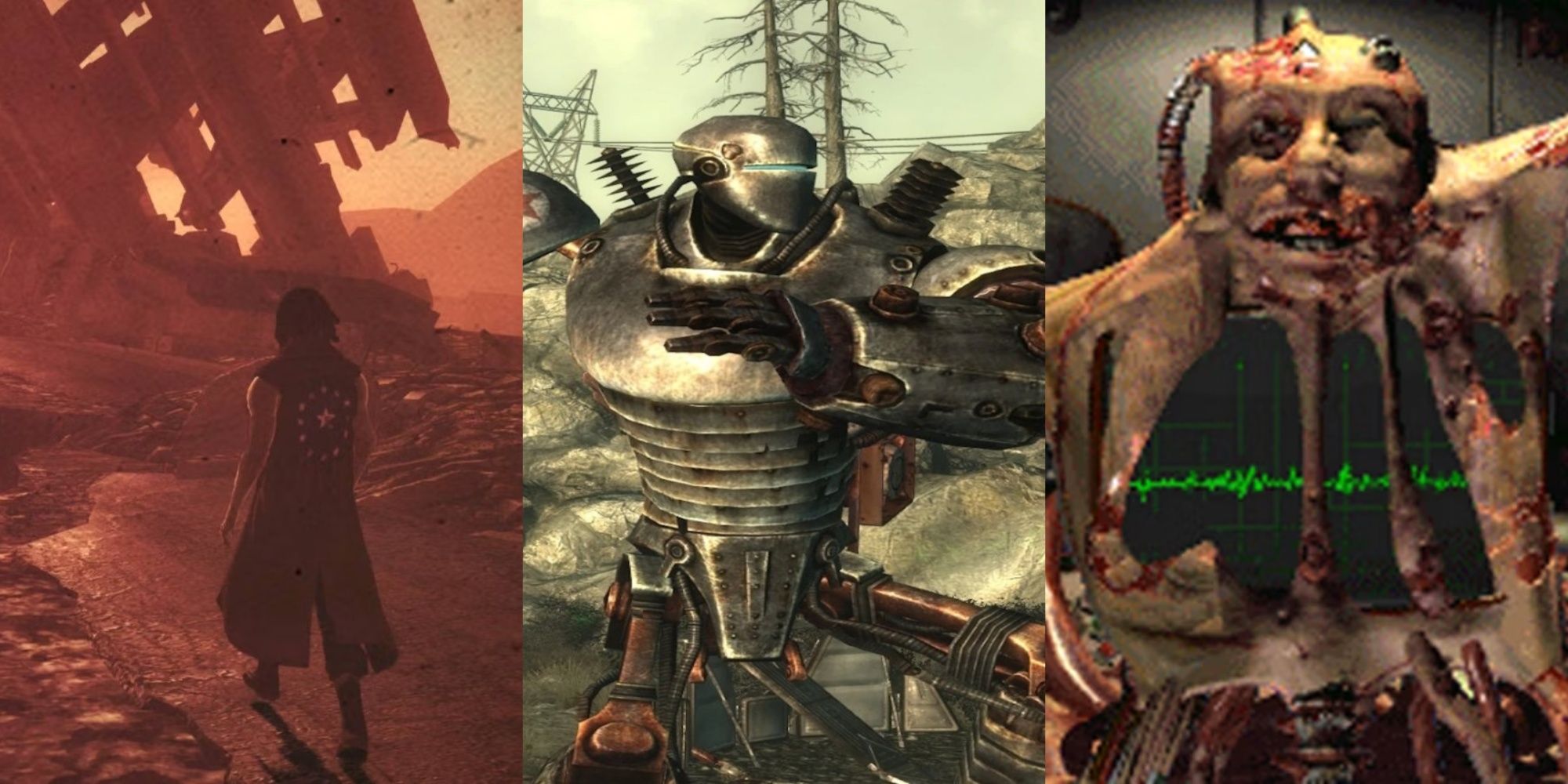
War Never Changes: The 16 Best Quotes From The Fallout Games
There have been a lot of awesome quotes sprinkled throughout the Fallout series. Here's a look at 10 of the all-time best.
Bethesda, who acquired the IP, would go on to make their own entries in the series, starting with the critically acclaimed Fallout 3 in 2008. Fallout 3 would represent a massive (and in some cases permanent) shift in the series' direction in both gameplay design and artistic sensibility. Fans would give both praise to and bemoan the changes Bethesda would make to the franchise with not only this title, but their follow-up titles as well. Some of these changes are rather small but others are too big not to notice.
Updated February 23 2024, by Gregory Gomez: The Fallout franchise is nearly thirty years old now, and it has changed and evolved quite a bit in that time. Many of the founding gameplay and world-building elements that defined the series in its early years have either changed drastically, or have even been outright removed in favor of different ideas. These bygone tropes of the franchise have been endlessly discussed by fans, with many either lamenting their absence or supporting their removal. Either way, we've decided to add a few more entries to the list of classic Fallout tropes that aren't around anymore.
11 Ending Slides
A Series Of Epilogue Slides Based on Choices Made
At the end of the original two Fallout games and New Vegas, the player would be treated to a series of slides describing the impact their choices made on the various people and places of the wasteland. Narrated by Ron Perlman, the outcomes would range from merely life-saving to nation-destroying.
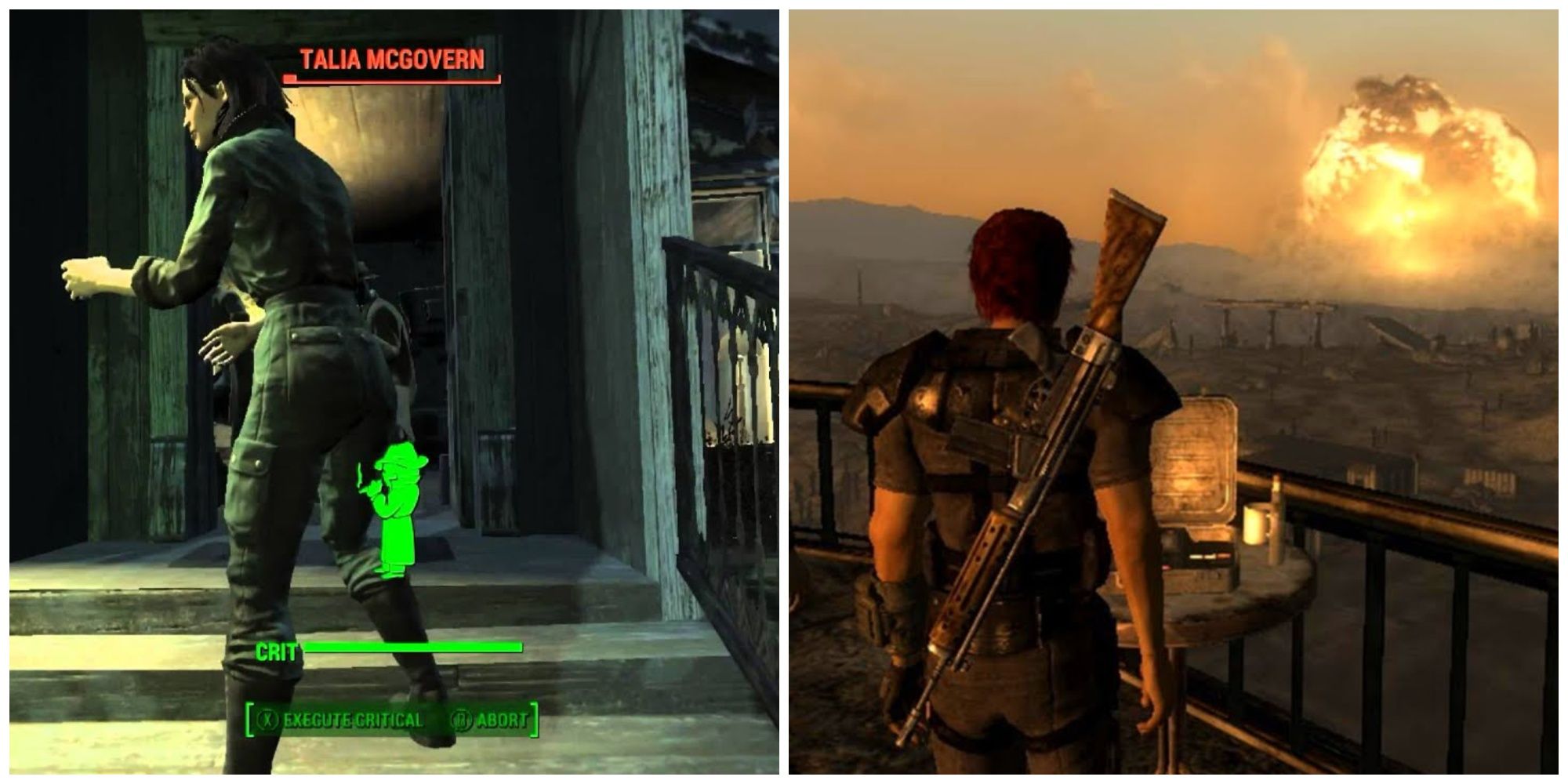
7 Darkest Choices in The Fallout Series
The Fallout series harbors some pretty dark choices which players can make of their own free will, and prove the mantra that war never changes.
With the release of Fallout 3, however, that trend would begin to disappear. The game still had a dynamic ending, but it was significantly less so than Fallout 1 or 2. It would show images of the friends or enemies the player made during the game, set against either a morally good or morally bad narration, with little to no description of the impact any of the choices by the player may have had. Fallout 4 took this a step further and made the endings even more limited and vague, seemingly removing even the morality aspect from the player's choices.
10 Smart Super Mutants
Mutants Used To Be Capable Of Great Intelligence
In modern Fallout games, Super Mutants fill more of an ogre-esque archetype. They aren't very smart, and can barely string enough rage-fueled words together most of the time. This was not always the case, however, as many of the super mutants encountered in Fallout 1, 2, and New Vegas possess an enhanced intellect as a result of FEV exposure. This isn't limited to major characters either, as several minor and even random enemies demonstrate undamaged mental faculties. Many go on to form societies and perform complex jobs like operating a uranium mine.
There is actually a canon reason behind this, however. Humans with DNA damaged by the radiation in the wasteland don't receive the mind-enhancing effects of the virus, while those with undamaged DNA (Vault Dwellers, for example) would either retain their intellect or become even smarter. Dumb super mutants can certainly be found in the aforementioned games (such as Harry in Fallout 1), but it was not nearly as much of a hard rule as it seems to be currently.
9 Turn-Based Combat
Everyone Gets An Equal Opportunity To Attack
Modern fans might be shocked when they go back and play the older Fallouts. They didn't utilize first-person, real-time combat like Fallout 3 and on do. The first two games were exclusively turn-based, meaning that the player does what they want within a sequence of turns and not in real-time. For example, the player wants to shoot another character; they then click their gun icon, target the character, and fire.
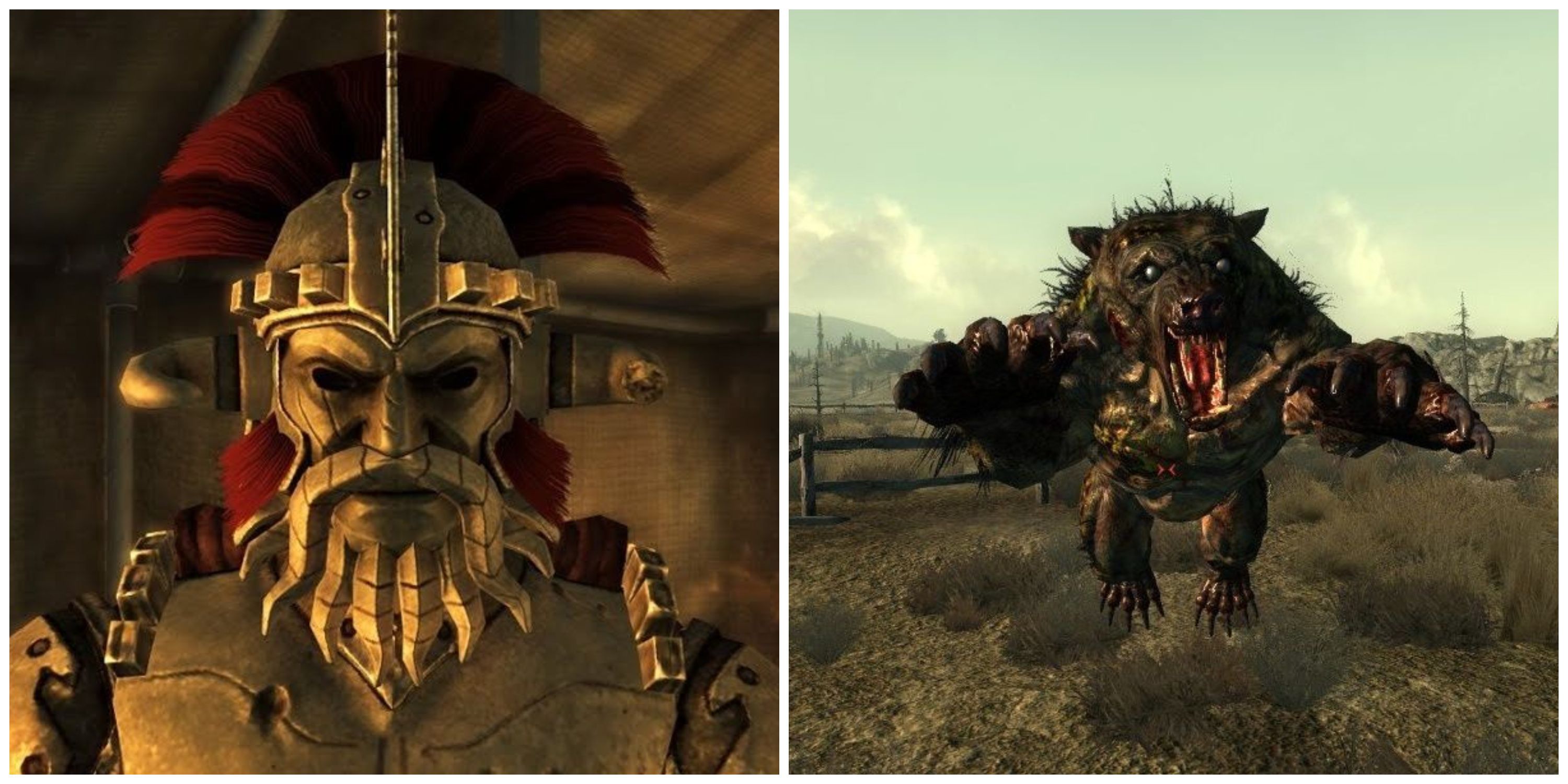
Most Powerful Enemies In Fallout New Vegas
Fallout New Vegas is filled with a wide array of enemy types. Here's a look at some of the absolute strongest found throughout the game.
The game then gives the player's opponent the chance to attack, locking the player in place while they do so. The number of actions the player can make each turn depends on the number of action points they have (and a select number of perks). Many people nowadays consider this slow and clunky. Turn-based games in general are not as ubiquitous as they once were, and many see Fallout becoming an FPS-RPG as a good move on Bethesda's part.
8 Grim Dark Tone
The Post-Apocalypse Used To Be More Depressing
Fallout 4 and 76 both represent a pretty big shift in tones for the franchise. The original games, as well as Fallout 3, were known for having very dark atmosphere and tone. Fallout 2 definitely injected a lot of comedy but its music and art direction were the same as the first game so it still felt mostly serious.
Fallout 3 did a fantastic job of creating a desolate and unforgiving world that made the player feel afraid of everyone and everything around them. This would change with Fallout 4, which had a noticeably lighter and less desperate tone than any of the games before it. The same can be said for Fallout 76, which is stylized almost like a theme park. This is reflected not only in the art and music but in the story and characters.
7 Industrial Style Soundtrack
A Moody And Atmospheric Soundtrack That Set The Stage
Many gamers know of Inon Zur's musical score for Fallout 3, 4, and 76. Fallout 3 in particular features perhaps his best work in the series. It, however, features a conventional orchestral score. This is certainly a departure from the darker, more industrial-oriented score by Mark Morgan from the first two games. Tracks like Vault Of The Future, which features the echos of pumping machinery, garbled radio voices, and frantic keyboard typing.
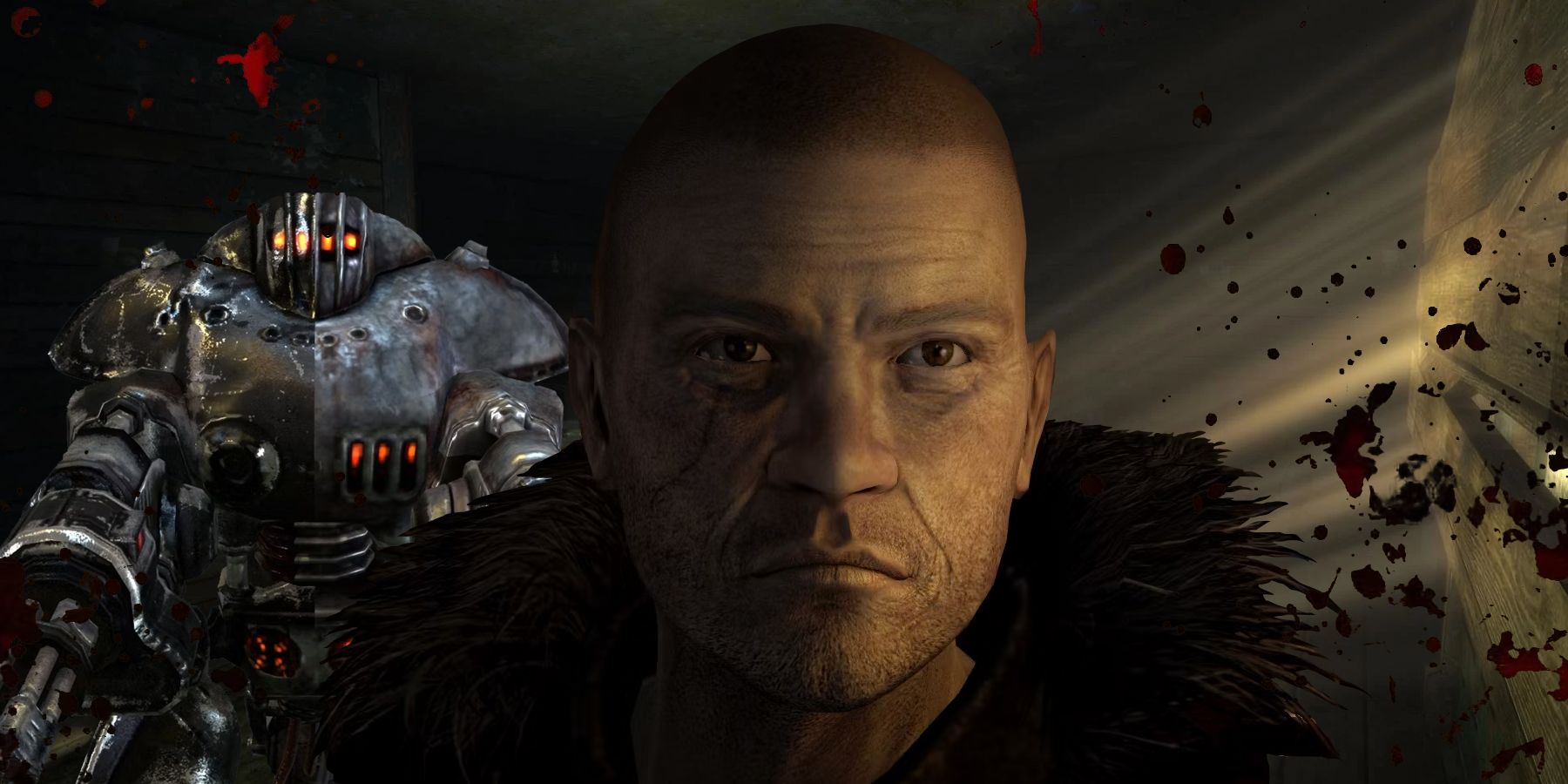
Fallout New Vegas: The 24 Best Graphics Mods You Need To Install
Fallout New Vegas may look aged compared to the rest of the series but fans are bringing it into the modern age with these beautiful visual mods.
Another track, Desert Wind is a haunting piece of music that sounds exactly like its name would suggest; cold and isolating wind blowing across an empty wasteland. New Vegas would bring back some of these songs but for much of the game, the music is a mix between Fallout 3's music and the former's wild west style tracks. Fallout 4 and 76 drop the whole idea completely in favor of conventional orchestral scoring.
6 Art Deco / Gothic Art Direction
The Series Once Heavily Utilized an Art Deco and Gothic Visual Style
While the series has drifted more towards a kind of R-rated "Jetsons-esque" retro futurism under Bethesda's tenure, Fallout used to heavily rely upon a gothic art deco look in order to create a sense of nostalgia for a bygone world. It was equal parts wondrous and foreboding, with massive sleek buildings ornamented with ominous humanoid sculptures, almost as though the ghosts of the old world still lingered in the skeletal ruins of society.
The first two games cemented this look and both Fallout 3 and New Vegas continued down the path to a certain extent.
5 Numeric Leveling System
Simple And Effective With Plenty Of Room For Creativity
While newer Fallout games have mostly a perk-based leveling system, all of the mainline games before Fallouts 4 and 76 had virtually the same system. The player is awarded a certain number of skill points which they then put into individual skills at their discretion. They then pick a perk either every level or every other level. The skills that the player puts points into include small guns, medicine, lock picking, speech, and many others.
That is until the level cap was reached, of course. The idea is that the player picks certain skills and maxes them out in order to create a character with a defined role, rather than being a master in everything. Beginning with Fallout 4, perks became the centerpiece of the leveling system with players using perk points to choose a perk every time they level up, with skills and skill checks mostly disappearing.
4 The Trait System
Ranging From Cold Practicality to Utter Absurdity
Similar to perks, traits are attributes the player can choose that affect their gameplay experience. Unlike perks, however, the player can only choose them at the beginning of the game and they always come with a catch. Perks are virtually always good things, but traits can come with major downsides that might make them unattractive to players of a certain build.

7 Darkest Choices in The Fallout Series
The Fallout series harbors some pretty dark choices which players can make of their own free will, and prove the mantra that war never changes.
For example, the Fast Shot trait from New Vegas raises the rate of fire of the player's guns but also decreases their accuracy with them considerably. The only trait that doesn't have an objective downside is probably the infamous, Wild Wasteland. All it does is add more easter eggs to the game. Bethesda hasn't included traits into any of their games post Fallout: New Vegas, unfortunately.
3 Isometric Viewpoint
A Staple of Classic RPG Design In The Early Days
Most players have only played the first-person Fallout games but for a time the only way to experience the series was as a turn-based isometric RPG. The term "isometric" refers to the angle at which the game world is presented. The player is given a comparatively larger view of an area than in a first-person game in which the player can only see forward.
An isometric game gives the player the ability to see the entire area surrounding their character and then some. This is useful for combat where the player is surrounded and can make multiple attacks per turn. If they can manage that, spinning around and killing opponents in every which direction is very satisfying.
2 Low Intelligence Conversations
Characters With Low Intelligence Were Treated To Hilarious Conversations
One of the fun things about the first two Fallout titles is that, if the player's Intelligence stat is low enough, it will affect not only what dialogue choices they have, but how other characters respond to them, including the talking head characters. This is rather impressive (and absolutely hilarious) because it means the developers recorded alternating sets of dialogue for each major character based on a single SPECIAL stat, which is something the modern games haven't really done.
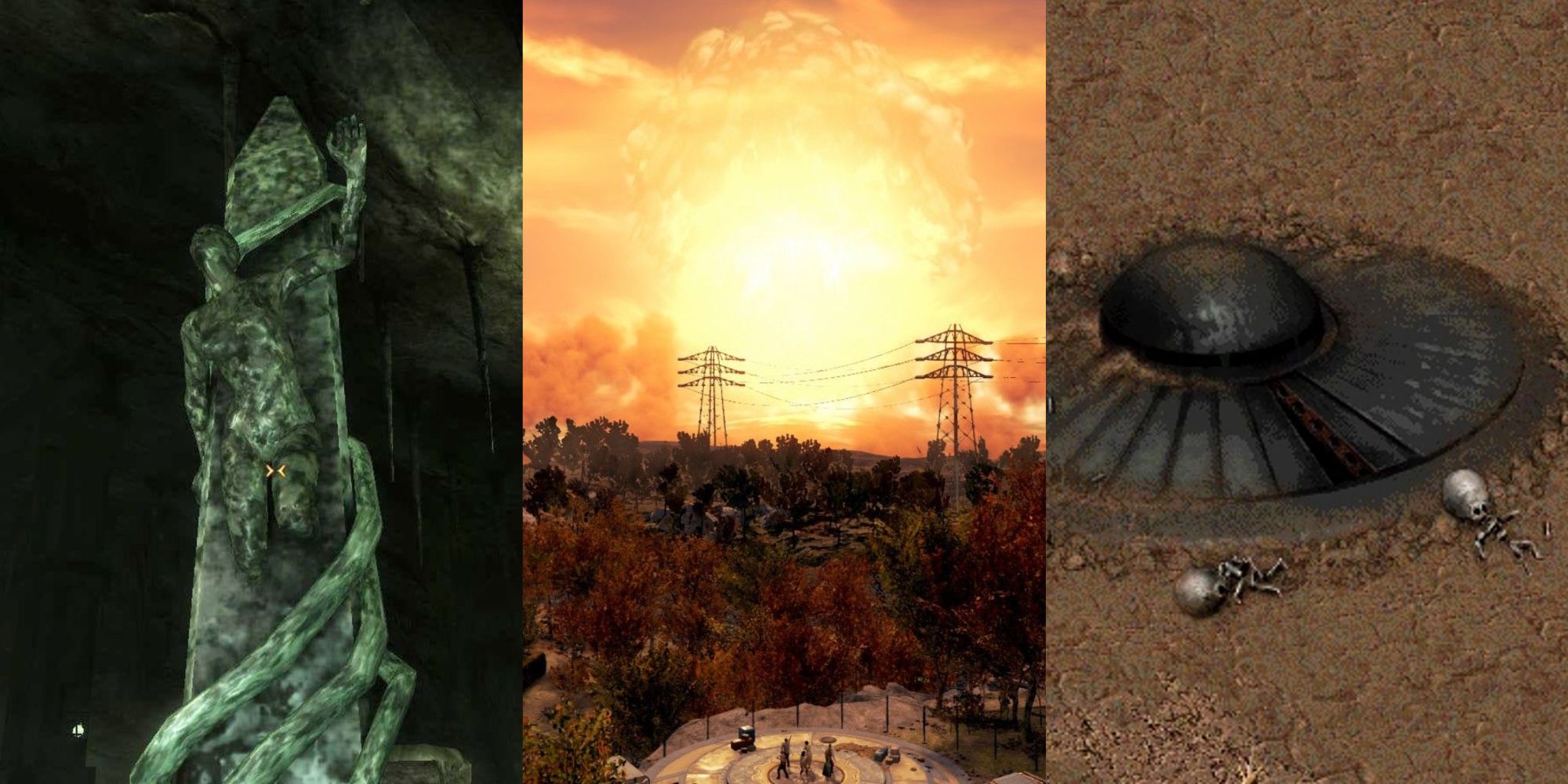
7 Unsolved Mysteries In The Fallout Franchise
There are plenty of mysteries in the Fallout universe that are open to many different interpretations.
New Vegas is the only game to even make an attempt at this idea besides the originals. A low-intelligence playthrough of the old Fallout games is often recommended by fans because of things like this.
1 The Grid World
Traveling The Vast Desert Of California One Square At A Time
When Fallout was first released in 1997 the technology for a real-time open world wasn't there yet. By the time of Fallout 3 sure, but that was over 10 years later and even then, the game world covered a much smaller area. In the original Fallouts, the world itself is simply a large overhead map of the California wasteland divided into squares.
Within some of these squares are the game's main locations, which are spread out over the whole map. Each square on the map has a chance to present the player with a certain kind of encounter, be it raider parties, super mutant patrols, or random encounters etc. While traveling from place to place through the grid world, the calendar is actively changing meaning that it can take many in-game days or weeks to get somewhere. This matters a lot when quite a few of the quests are time-sensitive.
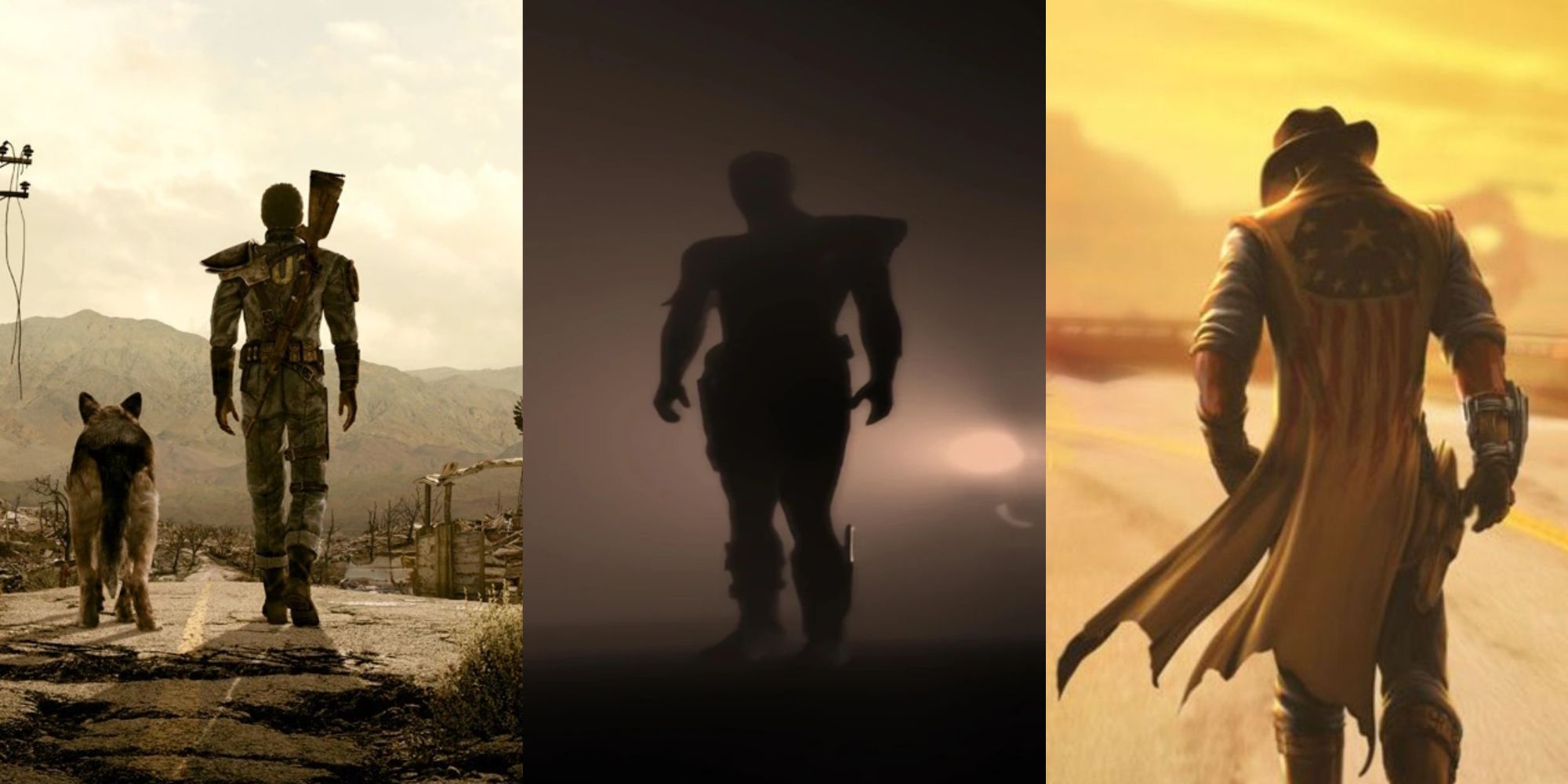
Fallout Protagonists Ranked By Their Capabilities & Accomplishments
These Fallout protagonists are all impressive, but some achieved more than others.

